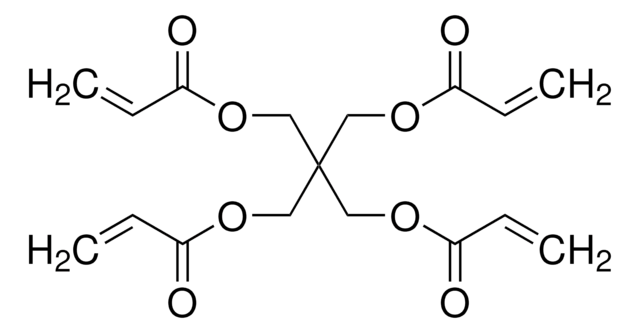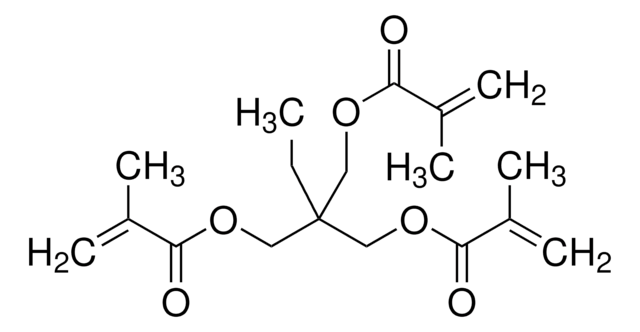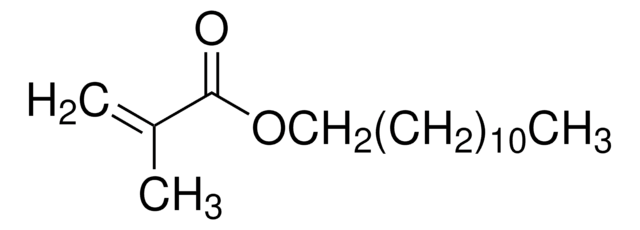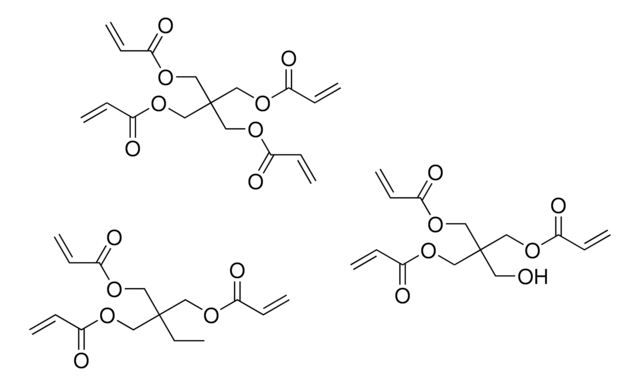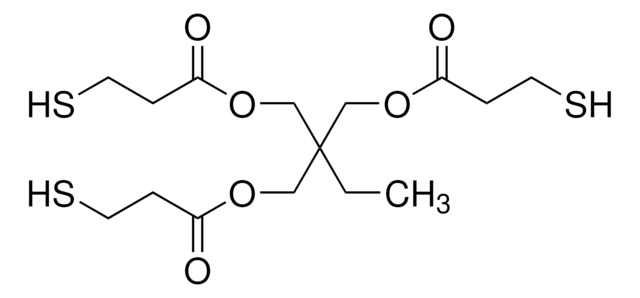246840
Trimethylolpropane trimethacrylate
contains 250 ppm monomethyl ether hydroquinone as inhibitor, technical grade
Synonyme(s) :
Acryester TMP, Blemmer PTT, PTMA, TMPTMA
About This Item
Produits recommandés
Qualité
technical grade
Densité de vapeur
>1 (vs air)
Pression de vapeur
<0.01 mmHg ( 20 °C)
Contient
250 ppm monomethyl ether hydroquinone as inhibitor
Indice de réfraction
n20/D 1.472 (lit.)
Densité
1.06 g/mL at 25 °C (lit.)
Chaîne SMILES
CCC(COC(=O)C(C)=C)(COC(=O)C(C)=C)COC(=O)C(C)=C
InChI
1S/C18H26O6/c1-8-18(9-22-15(19)12(2)3,10-23-16(20)13(4)5)11-24-17(21)14(6)7/h2,4,6,8-11H2,1,3,5,7H3
Clé InChI
OKKRPWIIYQTPQF-UHFFFAOYSA-N
Vous recherchez des produits similaires ? Visite Guide de comparaison des produits
Catégories apparentées
Description générale
Application
- Poly(hydroxyethyl methacrylate) (pHEMA) nanocomposites that are used in the dental industry.
- Silicone rubber with a reduced bleed-out ratio.
- Organic monolithic column by living/controlled free-radical polymerization. This column can be used as a stationary phase in capillary liquid chromatography.
- Macroporous poly (glycidyl methacrylate-co-trimethylolpropane trimethacrylate) materials with fine controlled porous properties.
Code de la classe de stockage
10 - Combustible liquids
Classe de danger pour l'eau (WGK)
WGK 2
Faites votre choix parmi les versions les plus récentes :
Déjà en possession de ce produit ?
Retrouvez la documentation relative aux produits que vous avez récemment achetés dans la Bibliothèque de documents.
Les clients ont également consulté
Notre équipe de scientifiques dispose d'une expérience dans tous les secteurs de la recherche, notamment en sciences de la vie, science des matériaux, synthèse chimique, chromatographie, analyse et dans de nombreux autres domaines..
Contacter notre Service technique
